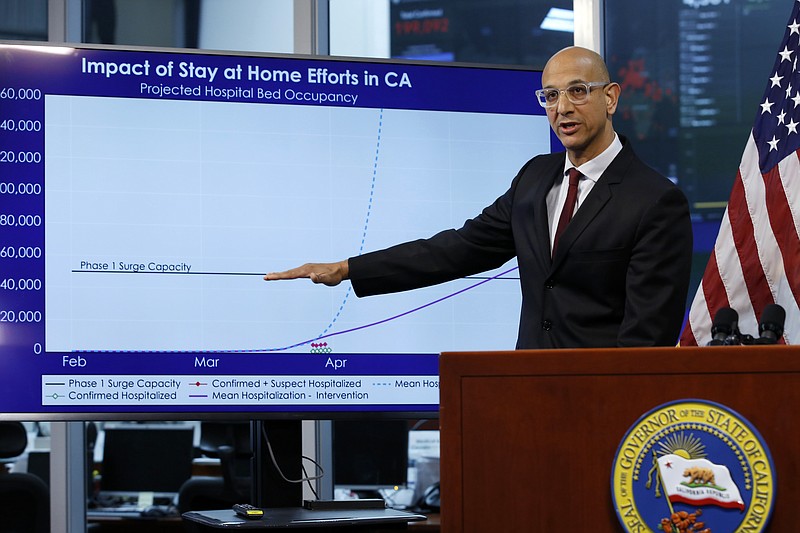LOS ANGELES (AP) - A majority of Californians are under a nighttime curfew that began Saturday as surging coronavirus cases threaten to swamp health care systems, and the state's largest county warned an even more drastic lockdown could be imminent.
The newest restrictions require people to stay home from 10 p.m. to 5 a.m. unless they are responding to an emergency, shopping for groceries, picking up takeout or walking their dogs. The curfew will last until Dec. 21, with a possible extension if rapidly worsening trends don't improve.
Authorities say the focus is on keeping people from social mixing and drinking - the kinds of activities blamed for causing COVID-19 infections to soar after dipping only a few months ago.
The curfew applies to 41 of the state's 58 counties that are in the "purple" tier, the most restrictive of four state tiers allowing various stages of economic reopening. Those counties encompass 94 percent of the nearly 40 million people living in the most populous U.S. state.
California as a whole has seen more than 1 million infections, with a record of almost 15,500 new cases reported Friday.
Los Angeles County, the state's largest with about 10 million people, could see even more stringent lockdowns as early as next week as its caseload and hospitalization figures reach stratospheric levels. The county accounts for a quarter of the state's 40 million residents, but it has about a third of the coronavirus cases and close to 40 percent of the deaths.
County public health Director Barbara Ferrer said Friday that the county had 4,272 new cases in a single day and 13,247 over the past three days. The rate of positive COVID-19 tests has jumped to 7.3 percent, and nearly 1,300 people have been hospitalized.
"We're seeing cases increase at a faster rate than we saw over the summer," Ferrer said. "The data looks really bad now and we've had three terrible days in terms of case rates and increases in hospitalizations."
Officials hope to avoid full-on lockdown orders of the kind enacted back when the COVID-19 pandemic was gaining steam in March. Public health officials since then have reacted to swings in infection rates by easing and then reinforcing various stay-at-home orders in an effort to balance safety and the economy.
The result, however, has been confusion and what some health officials term "COVID fatigue" in which people simply become tired of the rules and let down their guard.
Health officials acknowledge that the curfew will help flatten the infection rates only if people heed it voluntarily. Violators could face fines or be charged with a misdemeanor, and businesses could have their business licenses revoked. But counties are mainly responsible for enforcement.
Officials in El Dorado, Fresno, Los Angeles, Orange, Placer, Sacramento, San Bernardino and Stanislaus counties were among those saying they would not enforce the curfew, with some strongly opposed.
"I think it's unlawful and unconstitutional. The government has stripped us of our civil rights, using the virus to do that," said Alan Hostetter, who organized a curfew-breaking protest in San Clemente set for 10:01 p.m. He said several similar protests were planned across the state Saturday night.

